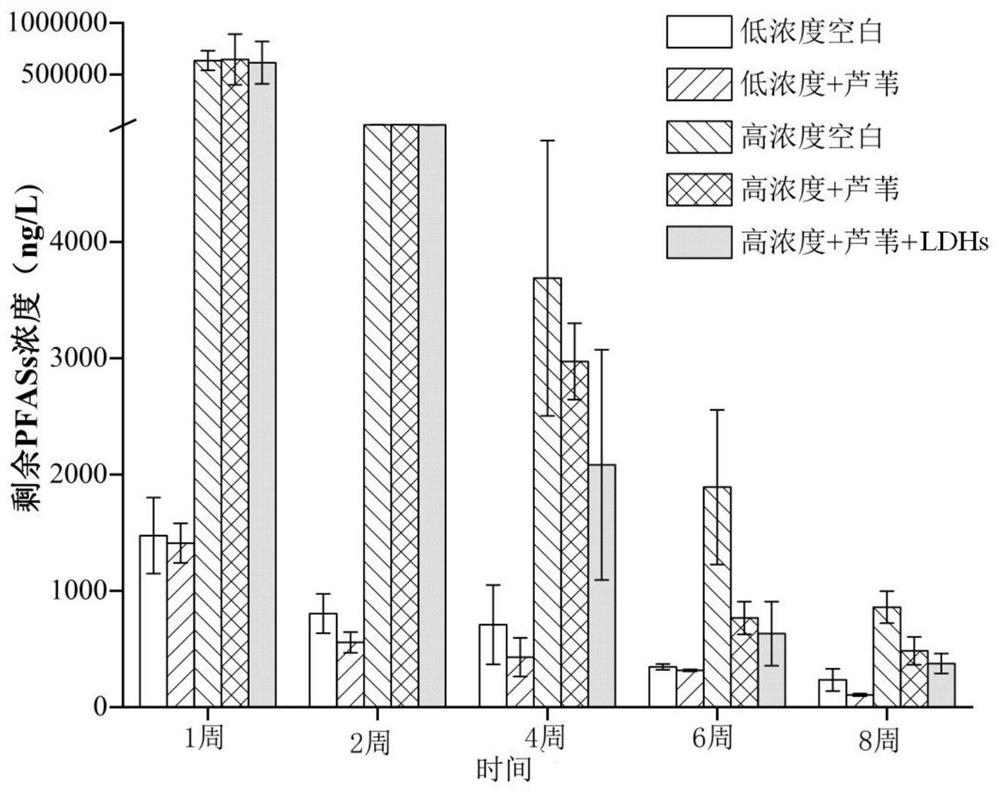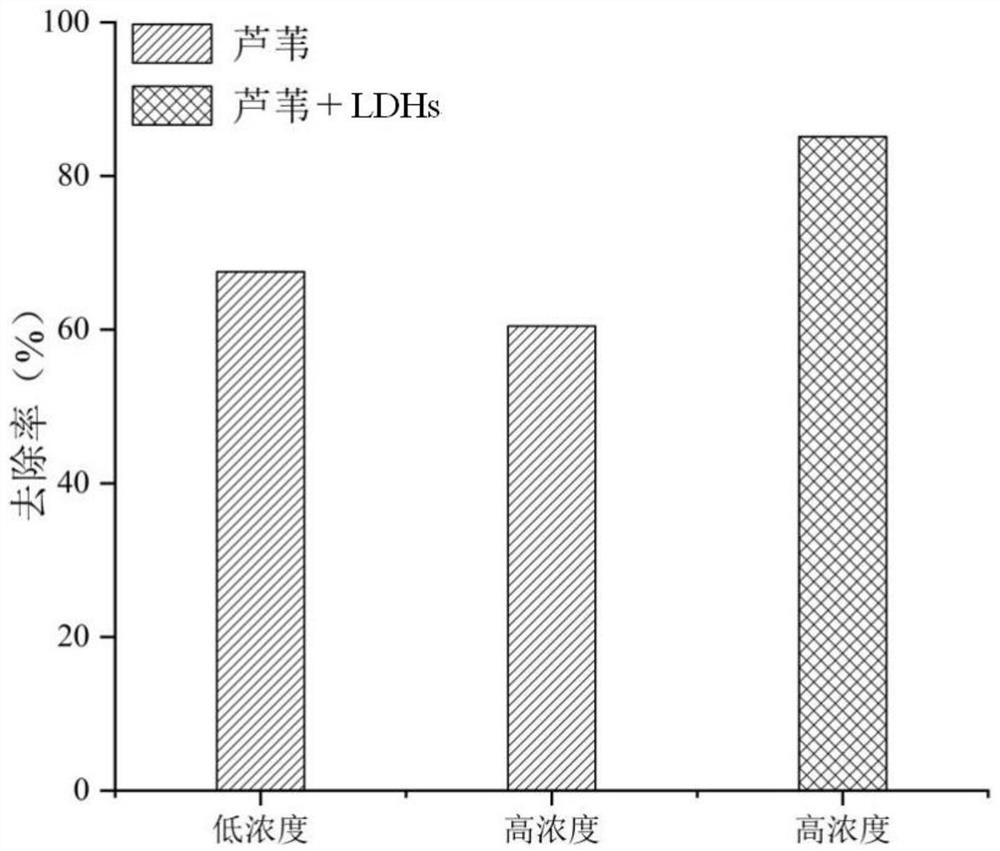A kind of restoration method of pfass polluted wetland
A remediation method and wetland technology, applied in the field of remediation of PFASs-contaminated wetlands, can solve the problems of difficult operation and poor effect, and achieve the effects of excellent effect, enhanced enrichment, and good adsorption.
- Summary
- Abstract
- Description
- Claims
- Application Information
AI Technical Summary
Problems solved by technology
Method used
Image
Examples
preparation example Construction
[0026] In the present invention, the preparation method of the LDHs preferably comprises the following steps:
[0027] Mixing a divalent water-soluble salt, a trivalent metal water-soluble salt and water to obtain a mixed metal ion solution;
[0028] The mixed metal ion solution is mixed with ammonia water for aging to obtain LDHs.
[0029] The invention mixes divalent water-soluble salt, trivalent metal water-soluble salt and water to obtain mixed metal ion solution. In the present invention, the divalent water-soluble salt preferably includes Mg(NO 3 ) 2 , MgSO 4 , Mg(CH 3 COO) 2 , MgF 2 , MgCl 2 , Mn(NO 3 ) 2 , MnSO 4 , Mn(CH 3 COO) 2 , MnF 2 , MnCl 2 , Fe(NO 3 ) 2 , FeSO 4 , Fe(CH 3 COO) 2 , FeF 2 , FeCl 2 , Co(NO 3 ) 2 、CoSO 4 , Co(CH 3 COO) 2 、CoF 2 、CoCl 2 , Ni(NO 3 ) 2 、NiSO 4 , Ni(CH 3 COO) 2 、NiF 2 and NiCl 2 one or more of them. In the present invention, the trivalent metal water-soluble salt preferably includes Cr(NO 3 ) 3 、Cr ...
Embodiment 1
[0039] 0.12mol Mg(NO 3 ) 2 , 0.04mol Al(NO 3 ) 3 Mix with 100mL water to obtain a mixed metal ion solution;
[0040] Under stirring conditions, 100 mL of ammonia water with a concentration of 6 mol / L was added dropwise into the mixed metal ion solution, and the pH value was kept at 10, aged at room temperature for 24 hours, filtered, and the obtained solid product was washed with ultrapure water. Until the lotion is neutral, place it in a freeze dryer for freeze-drying, grind the obtained freeze-dried powder and pass through a 150-mesh sieve, the part under the sieve is LDHs, and the specific surface area is 49.2m 2 / g.
[0041] Take unpolluted soil with a relative humidity of 76% in Xuanwu District, Nanjing City, Jiangsu Province, and then dry it in the sun, grind it and pass it through a 2mm sieve, and take the part under the sieve to obtain the experimental soil.
[0042] Add PFBA, PFBS, PFOA, PFOS, F-53B and GenX to ultrapure water to prepare a low-concentration PFASs...
Embodiment 2
[0046] Add low-concentration polluted soil with a depth of 22 cm to a planting pot with a diameter of 20 cm and a height of 30 cm, and plant two reeds in each pot. The growth period of the reeds is 60 days, and the temperature is room temperature. Water 650mL every day, and water 650mL every 14 days from the 15th to 60th day. During the test, the surface water in the planting pots was collected regularly to measure the concentration changes of PFASs in the surface water, and the parallel experiments were performed 3 times.
PUM
 Login to View More
Login to View More Abstract
Description
Claims
Application Information
 Login to View More
Login to View More - R&D
- Intellectual Property
- Life Sciences
- Materials
- Tech Scout
- Unparalleled Data Quality
- Higher Quality Content
- 60% Fewer Hallucinations
Browse by: Latest US Patents, China's latest patents, Technical Efficacy Thesaurus, Application Domain, Technology Topic, Popular Technical Reports.
© 2025 PatSnap. All rights reserved.Legal|Privacy policy|Modern Slavery Act Transparency Statement|Sitemap|About US| Contact US: help@patsnap.com



